《European Culture:An Introduction》
| 作者 | 王佐良等主编 编者 |
|---|---|
| 出版 | 外语教学与研究出版社 |
| 参考页数 | 523 |
| 出版时间 | 1992年02月第1版(求助前请核对) 目录预览 |
| ISBN号 | 无 — 求助条款 |
| PDF编号 | 817985488(仅供预览,未存储实际文件) |
| 求助格式 | 扫描PDF(若分多册发行,每次仅能受理1册) |

Introduction1
1. Uses of the Subject1
2. Two Major Elements in European Culture1
DIVISION ONEGREEK CULTURE AND ROMAN CULTURE2
Ⅰ. Greek Culture2
1. The Historical Context2
2. Social and Political Structure3
3. Homer3
4. Lyric Poetry13
5. Drama14
a. Aeschylus (525—456 B.C.)14
b. Sophocles (496—406 B.C.)17
c. Euripides (484—406 B.C.)18
d. Comedy18
6. History19
a. Herodotus (484—430 B.C.)19
b. Thucydides (about 460—404 B.C.)20
7. Philosophy and Science22
a. Socrates23
b. Plato26
c. Aristotle27
d. Contending Schools of Thought29
e. Science31
8. Art, Architecture, Sculpture and Pottery32
a. Art32
b. Architecture32
c. Sculpture33
i. Discus Thrower33
ii. Venus de Milo34
iii. Laocoon group about 125 B. C34
d. Pottery34
9. Impact35
a. Spirit of Innovation35
b. Supreme Achievement35
c. Lasting Effect36
Question for Revision36
Ⅱ.Roman Culture37
1..Romans and Greeks37
2. Roman History38
3. Latin Literature39
a. Prose40
i. Marcus Tullius Cicero (106—43 B.C.)40
ii. Julius Caesar (102/100?—44 B.C.)42
b. Poetry43
i. Lucretius (about 93—50 B.C.)43
ii. Virgil (70—19 B.C.)44
4. Architecture, Painting and Sculpture47
a. Architecture47
i. The Pantheon47
ii. Pont du Gard48
iii. The Colosseum48
b. Painting48
c. Sculpture48
i. Constantine the Great48
ii. Spoils from the Temple in Jerusalem (81 A. D. )48
iii. She-wolf49
Questions for Revision49
DIVISION TWOTHE BIBLE AND CHRISTIANITY51
Ⅰ. General Introduction51
Ⅱ. The Old Testament52
1.The Pentateuch52
a. The Fall of Man53
b. Noah's Ark56
c. Ten Commandments60
2. The Historical Books62
3. The Poetical Books63
a. Book of Job63
b. Book of Psalms64
c. Proverb66
d.Ecclesiastes68
e.Song of Solomon68
4.The Prophets70
a.Amos70
b.Jeremiah (about 650—570 B.C. )71
c.The Book of Daniel72
Ⅲ.Rise of Christianity73
1.The Life of Jesus74
2.The Spread of Christianity75
Ⅳ.The New Testament77
1.The Birth of Jesus78
2.Jesus Is Tempted by the Devil79
3.The Sermon on the Mount79
4.The Last Supper81
5.The Crucifixion83
Ⅴ.Translations of the Bible86
Questions for Revision89
DIVISION THREETHE MIDDLE AGES91
Ⅰ.General Introduction91
Ⅱ.Manor and Church92
1.Feudalism92
a.Growth of Feudalism92
b.The Manor93
c.Knighthood and Code of Chivalry94
2.The Church95
a.The Organization of Church95
b.Church Fathers and Early Monasticism96
c.The Power and Influence of the Catholic Church98
3.The Crusades99
Ⅲ.Learning and Science101
1.Charlemagne and Carolingian Renaissance101
2.Alfred the Great and Wessex Centre of Learning102
3.St.Thomas Aquinas and Scholasticism102
4.Roger Bacon and Experimental Science103
Ⅳ.Literature105
1.National Epics105
a.Beowulf (700—750 A. D. )105
b.Song of Roland (about the 12th century A. D. )111
2.Dante Alighieri and The Diuine Comedy118
3.Geoffrey Chaucer and The Canterbury Tales123
Ⅴ.Art and Architecture126
1.Romanesque126
2.Gothic127
Questions for Revision127
DIVISION FOURRENAISSANCE AND REFORMATION129
Ⅰ.General Introduction129
Ⅱ.Renaissance in Italy130
1.Historical Background130
2.The Rise of Humanism131
3.New Literature132
a.Giovanni Boccaccio (1313—1375)132
b.Francesco Petrarch (1304—1374)133
4.Renaissance Art135
a.Early Renaissance Artists136
i.Giotto (about 1266—1337)136
ii.Filippo Brunelleschi (1377—1446)137
iii.Donatello (1386—1466)137
iv.Giorgione (Giorio de Castelfranco,about 1477—1510)137
b.High Renaissance Artists138
i.Leonardo da Vinci (1452—1519)138
ii.Michelangelo Buonarroti139
iii.Raphael (Raffaello Sancio, 1483—1520)141
iv.Titian (about 1488—1576)141
5.Decline of the Italian Renaissance142
Ⅲ.Reformation and Counter-Reformation143
1.Pre-Luther Religious Reformers144
a.John Wycliffe (about 1330—1384)144
b.Jan Hus (1372—1415)144
2.Martin Luther (1483—1546) and His Doctrines145
a.Beginning of the Reformation145
b.Translation of the Bible145
c.Gospel of Love and Idea of Equality146
3.John Calvin (1509—1564) and Calvinism147
4.Reformation in England147
5.Counter-Reformation149
a.Council of Trent149
b.Ignatius and the Jesuits150
6.Protestantism and the Rise of Capitalism151
7.Conclusion152
Ⅳ.Renaissance in Other Countries153
1.Renaissance in France154
a.Historical Background154
b.Renaissance Writers in France154
i.Francois Rabelais (about 1483—1553)154
ii.Pleiade156
iii.Michel Eyques de Montaigne (1533—1592)156
2.Renaissance in Spain161
a.Historical Background161
b.Literature162
Miguel de Cervantes (1547—1616)162
c.Art165
El Greco (1541—1614)165
3.Renaissance in the North166
a.Renaissance in the NetherlandsErasmus (about 1466?—1536)166
b.Renaissance in FlandersPieter Bruegel (the Elder) (about 1525—1569)167
c.Renaissance in Germany168
i.Albrecht Durer (1471—1528)168
ii.Hans Holbein (the Younger)169
4.Renaissance in England169
a.Historical Background169
b.Thomas More (1477—1535)170
c.William Shakespeare (1564—1616)176
Ⅴ.Science and Technology during the Renaissance179
1.Geographical Discoveries180
a.Christopher Columbus (1451—1506)180
b.Bartholomeu Dias (1466?—1500)180
c.Vasco da Gama (about 1460—1524)180
d.Amerigo Vespucci (1457—1512)180
2.Astronomy181
Nicolaus Copernicus (1473—1543)181
3.Anatomy181
a.Leonardo da Vinci (1452—1519)181
b.Andreas Vesalius ( 1514—1564)181
4.Printing181
Aldus Manutius (1450—1515)181
5.Political Science and Historiography182
a.Dante (1265—1321 )182
b.Niccol6 Machiavelli (1469—1527)182
c.Giorgio Vosari (1511—1574)183
Ⅵ.Summing-up183
Questions for Revision184
DIVISION FIVETHE SEVENTEENTH CENTURY186
Ⅰ.General Introduction186
Ⅱ.Science187
1. From Copernicus to Kepler187
2.Galileo Galilei (1564—1642)190
3.Sir Isaac Newton (1642—1727)193
4.Gottfried Wilhelm von Leibniz (1646—1716)194
5.Invention of New Instruments195
6.Two Merits Shared by the Great Scientistsof the 17th Century196
Ⅲ.Philosophy, Politics and Literature in England196
1.Francis Bacon (1561—1626)196
2.Thomas Hobbes (1588—1679)200
a.Hobbes's Materialist Views200
b.The Natural State of War201
c.The Laws of Nature202
d.The Theory of the Social Contract203
3.John Locke (1632—1704)204
a.Locke's Materialist Views204
b.Locke's Political Philosophy205
c.The Social Contract206
4.John Milton and the English Revolution208
Ⅳ.Descartes; French Classicism213
1.Rene Descartes (1596—1650)213
a.The Method of Cartesian Doubt214
b.Descartes's Theory of Knowledge215
c.Innate Ideas215
d.Descartes's Dualism216
2.French Classicism217
a.Pierre Corneille (1606—1684)218
b.Jean Racine (1637—1699)221
c.Moliere (1622—1673)223
Ⅴ.Art225
1. Baroque Art225
a.Giovanni Lorenzo Bernini (1598—1680)225
b.Michelangelo Caravaggio (1573—1610)225
c.Francesco Borromini (1599—1667)226
d.Peter Paul Rubens (1577—1640)226
e.Diego Velazquez (1599—1660)227
2.Dutch Protestant Art227
Van Rijn Rembrandt (1606—1669)227
3.Art and Architecture in France228
4.Music229
Questions for Revision229
DIVISION SIXTHE AGE OF ENLIGHTENMENT231
Ⅰ.General Introduction231
1.Enlightenment231
2.Historical Context233
Ⅱ.French Philosophy and Literature235
1.Baron de la Brede et de Montesquieu (1689—1755)235
a.Persian Letters (1721)235
b.The Spirit of the Laws (1748)235
2.Voltaire (pseudonym of Jean Franicois Arouet,1694—1778)239
a.Lettres Anglaise (also circulated as LettresPhilosophiques) (1739)240
b.Candide (1758)240
3.Jean-Jacques Rousseau (1712—1778)241
a.The Origin of Human Inequality (1755)241
b.The New Heloise (1761)241
c.Emile, or On Education (1762)242
d.The Social Contract (1762)242
e.The Confessions (1764—1770)242
4.Denis Diderot (1713—1784)243
a.Philosophical Thoughts (1746)243
b.Letters on the Blind (1749)243
c.Encyclopedie (1751)243
d.Elements of Physiology (1774—1780)243
e.Rameau's Nephew (1761—1774)244
Ⅲ.English Literature248
1.Alexander Pope (1688—1744)248
a.Essay on Criticism (1711)248
b.The Rape of the Lock (1712—1714)248
c.Dunciad (1728)249
d.Essay on Man (1733—1734)249
2.Daniel Defoe (1660—1731)250
3.Jonathan Swift (1667—1745)251
a.A Modest Proposal251
b.Gulliuer's Trauels ( Trauels into Seueral RemoteNations of the Worldby Lemuel Gulliuer) (1726)252
4.Samuel Richardson (1689—1761)252
5.Henry Fielding (1707—1754)252
6.Samuel Johnson (1709—1784)253
7.Journalism and the Periodical Essay253
Ⅳ.German Literature and Philosophy255
1.Gotthold Ephraim Lessing (1729—1781)255
a.Minna uon Barnhelm (1767)255
b.Nathan the Wise (1779)256
c.Laocoon (1766)256
d.Hamburgische Dramaturgie256
2.Wolfgang von Goethe (1749—1832)257
a.The Sorrows of Young Werther (1774)257
b.Wilhelm Meister's Apprenticeship (1795—1796)257
c.Wilhelm Meister's Trauels (1821—1829)257
d.Faust (part I , 1808; part 1 , 1832)258
e.Poetry and Truth (1811—1831)258
3.Johann Christoph Friedrich von Schiller (1759—1805)264
a.The Robber (1781)265
b.Cabal and Loue (1784)265
c.Wallenstein (1798 and 1799)265
d.Wilhelm Tell (1804)265
4.Immanuel Kant (1724—1804)268
a.General History of.Nature and Theoryof the Heauens (1755)268
b.Critique of Pure Reason268
c.Critique of Practical Reason269
d.Critique of Judgment269
Ⅴ.Art270
1.Rococo Art270
2.Typical Works and Major Artists271
a.Salon de la Princesse, IHI6tel de Soubise271
b.Rococo Painters272
i.Antoine Watteau (1684—1721)272
ii.Francois Boucher (1703—1770)272
Ⅵ. Music272
1.The Musical Enlightenment272
a.Johann Sebastian Bach (1685—1750)273
b.George Friderick Handel (1685—1759)274
2.The Classical Period275
a.Joseph Haydn (1732—1809)277
b.Wolfgang Amadeus Mozart (1756—1791)278
Questions for Revision281
DIVISION SEVENROMANTICISM284
Ⅰ.General Introduction284
1.What is Romanticism?284
2.Two Revolutions286
Ⅱ.Romanticism in Germany287
1.Goethe (1749—1832) and Schiller (1759—1805)287
2.Schlegel Brothers (the Jena School)288
3.Heinrich Heine (1797—1856)288
Ⅲ.Romanticism in England290
1.William Blake (1757-1827)290
2.The Lakers - Wordsworth and Coleridge292
3.George Gordon Byron (1788-1824)294
4.Percy Bysshe Shelley (1792-1822)296
5.John Keats (1795-1821)298
6.Walter Scott ( 1771-1832)299
Ⅳ.Romanticism in France300
1.Chateaubriand (1768-1848)300
2.Victor Hugo (1802-1885)302
3.George Sand (1804-1876)305
Ⅴ.Romanticism in Italy306
1.Alessandro Manzoni (1785-1873)306
2.Giacomo Leopardi (1798-1837)307
Ⅵ.Romanticism in Russia311
1.Aleksander Pushkin (1799-1837)311
2.Mikhail Y. Lermontov (1814-1841)314
Ⅶ.Romanticism in Poland315
Adam Mickiewicz (1798-1855)315
Ⅶ.Concluding Remarks - A True Movement319
Ⅸ.Art and Architecture320
1.Paintings320
a.Goya (1746-1828)321
b.David (1748—1825)322
c.Delacroix (1798—1863)323
d.Gericault (1791—1824)324
e.Turner (1775—1851)324
f.John Constable (1776—1837)325
2.Architecture325
Ⅹ.Music325
1.The Early Romantics326
a.Ludwig van Beethoven (1770—1827)326
b.Franz Schubert (1797—1828)329
c.Frederic Chopin (1810—1849)330
d.Robert Schumann (1810—1856)331
e.Felix Mendelssohn (1809—1847)332
2 The Later Romantics — Middle of the 19th Century333
a Johannes Brahms (1833—1897)334
b Peter Ilitch Tchaikovsky (1840—1893)335
DIVISION EIGHTMARXISM AND DARWINISM339
Ⅰ The Rise of Marxism339
1 General Introduction339
2 Historical Background339
3 The Three Sources and Three Component Parts ofMarxism340
a German Classical Philosophy and Marxist Philosophy340
i Hegelian dialectics340
ii Feuerbach's matealism341
iii Marxist philosophy341
iv Marxist historical materialism349
b English Classical Political Economy andMarxist Political Economy351
c Utopian Socialism and Scientific Socialism353
i Robert Owen (1771—1858)354
ii Henri de Saint-Simon (1760—1825)354
iii Charles Fourier (1772—1837)354
4 Marx and Literature362
5.Summing-up365
Ⅱ.Darwinism366
1.General Introduction366
2.Ideas of Evolution Before Darwin367
a.Jean-Baptiste de Monet Lamarck (1744—1829)367
b.Sir Charles Lyell (1797—1875)368
c.Karl Marx (1818—1883)368
3.Life of Charles Darwin (1809—1882)368
4.Darwin's Works and Theories370
a.On the Origin of Species by Means of NaturalSelection , or the Preseruation of Fauoured Races in the Struggle for Life370
b.The Descent of Man373
5.Effects of Darwinism373
a.On Biology373
b.On Theology373
c.On Social Science374
DIVISION NINEREALISM375
Ⅰ. General Introductiono375
1.What Is Realism?375
2.The Historical Background377
Ⅱ Realism in France378
1.Stendhal (pen name of Marie Henri Beyle, 1783—1842)378
2.Honore de Balzac (1799—1850)380
3.Gustave Flaubert (1821—1880)385
4.Emile Zola (1840—1902)388
5.Guy de Maupassant (1850—1893)390
Ⅲ Realism in Russia391
1.Nikolai Gogol (1809—1852)392
2.Ivan Sergeyevich Turgenev (1818—1883)393
3.FyodorDostoyevsky (1821—1881)394
4.Count Leo Tolstoy (1828—1910)396
5.Anton Pavlovi ch Chekhov (1860—1904)403
Ⅳ.Realism in Northern Europe407
1.Henrik Ibsen (1828—1906)407
2.August Strindberg (1849—1912)416
Ⅴ.Realism in England417
1.Charles Dickens (1812—1870)417
2.George Eliot (pen name of Mary Ann Evans,1819—1880)420
3.William Makepeace Thackeray (1811—1863)421
4.Thomas Hardy (1840—1928)425
5.George Bernard Shaw (1856—1950)426
Ⅵ.Realism in the United States427
1.Harriet Beecher Stowe (1811—1896)427
2.Walt Whitman (1819—1892)428
3.Mark Twain (pen name of Samuel Langhorne Clemens,1835—1910)433
4.Henry James (1843—1916)434
Ⅵ.Art435
1. Realism in Art435
a.Gustave Courbet (1819—1877)435
b.Jean-Francois Millet (1814—1875)436
2.Impressionism in Art436
a.Edouard Manet (1832—1883)437
b.Claude Monet (1840—1926)438
c.Camille Pissarro (1830—1903)438
d.Pierre Auguste Renoir (1841—1919)439
e.Hilaire Germain Edgar Degas (1834—1917)439
3.Post-Impressionism440
a.Paul Cezanne (1839—1906)440
b.Vincent van Gogh (1853—1890)441
c.Paul Gauguin (1848—1903)441
4.Sculpture442
5.Architecture442
Ⅶ.Music at the Turn of the Centu443
1.Antonin Dvofak (1841—1904)444
2.Claude Debussy (1862—1918)444
Questions for Revision445
DIVISION TENMODERNISM AND OTHER TRENDS446
Ⅰ.General Introduction446
1.Modernism Defined446
2.Historical Context447
3.Progress in Science448
4.New Ideas and Thoughts449
a.The Unconscious449
b.Id, Ego, Superego450
c.Oedipus Complex450
Ⅱ. Contemporary Western Literature Before 1945451
1. English Literature451a. T. S. Eliot ( 1888—1965)451
b.Joseph Conrad (1857—1924)455
c.Virginia Woolf (1882—1941)456
d.David Herbert Lawrence (1885—1930)461
2.Irish Literature462
a.William Butler Yeats (1865—1939)462
b.James Joyce (1882—1941)463
3.American Literature467
a.Ezra Pound (1885—1972)467
b.William Faulkner (1897—1962)469
c.Ernest Hemingway (1899—1961)470
4.German Literature475
Thomas Mann (1875—1955)475
5.French Literature475
a.Andre Gide (1869—1951)475
b.Marcel Proust (1871—1922)476
c.Albert Camus (1913—1960)477
6.Russian and Soviet Literature478
a.Maksim Gorky (1868—1936)478
b.Mikhail Aleksandrovich Sholokhov (1905—1984)478
Ⅲ.Literature and Philosophy Since 1945479
1.Angry Young Men in England479
a.Kingsley Amis (1922—1995)480
b.John Osborne (1929—1994)480
2.Beat Generation in America483
a.Allen Ginsberg (1926—1997)483
b.Jack Kerouac (1922—1969)485
3.Nouveau Roman (New Novel)485
a.Alain Robbe-Grillet (1922— )486
b.Nathalie Sarraute (1902— )486
4.Existentialism487
Jean-Paul Sartre (1905—1980)487
5.The Theatre of the Absurd488
a.Samuel Beckett (1906—1989)488
b.Eugene lonesco (1912—1994)492
6.Black Humour492
Joseph Heller (1923—1999)492
Ⅳ.Art and Music495
1.Art495
a.Fauvism497
i.Henri Matisse (1869—1954)497
ii.Andre Derain (1880—1954)497
b.Expressionism498
i.Emil Nolde (1867—1956)498
ii.George Grosz (1893—1959)498
iii.Max Beckmann (1884—1950)499
iv.Paul Klee (1879—1940)499
v.Wassily Kandinsky (1866—1944)499
c.Cubism500
i.Pablo Picasso (1881—1973)500
ii.Georges Braque (1882—1963)501
d.Futurism502
Umberto Boccioni (1882—1916)502
e.Dadaism502
i.Marcel Duchamp (1887—1968)503
ii.Max Ernst (1891—1976)503
f.Surrealism504
i.Salvador Dali (1904—1989)504
ii.Joan Miro (1893—1983)504
g.Abstract Expressionism505
Jackson Pollock (1912—1956)505
2.Sculpture505
a.Henry Moore (1898—1986)505
b.Constantine Brancusi (1876—1957)506
3.Music506
a.Arnold Schoenberg (1874—1951)508
b.Igor Stravinsky ( 1882—1971)509
c.Bela Bartok (1881—1945)510
d.Dmitry Shostakovich (1906—1973)510
Questions for Revision511
Select Bibliography. 参考书目513
瓯洲与中国:大事对照简表517
1992年02月第1版《European Culture:An Introduction》由于是年代较久的资料都绝版了,几乎不可能购买到实物。如果大家为了学习确实需要,可向博主求助其电子版PDF文件(由王佐良等主编 1992年02月第1版 外语教学与研究出版社 出版的版本) 。对合法合规的求助,我会当即受理并将下载地址发送给你。
高度相关资料
-
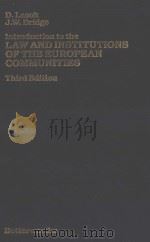
- AN INTRODUCTION TO THE LAW AND INSTITUTIONS OF THE EUROPEAN COMMUNITIES THIRD EDITION
- 1982 BUTTERWORTHS
-
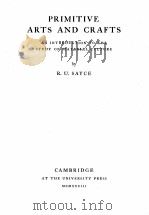
- PRIMITIVE ARTS AND CRAFTS AN INTRODUCTION TO THE STUDY OF MATERIAL CULTURE
- AT THE UNIVERSITY PRESS
-
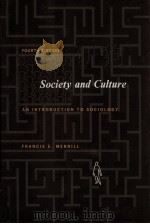
- SOCIETY AND CULTURE AN INTRODUCTION TO XOCIOLOGY FOURTH EDITION
- 1969 PRENTICE-HALL INC
-

- AN OUTLINE OF EUROPEAN ARCHITECTURE
- 1948 CHARLES SCRIBNER’S SONS
-
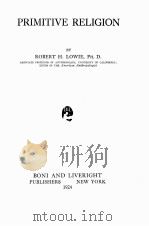
- PRIMITIVE RELIGION
- 1924 BONI AND LIVERIGHT
-

- European Culture:An Introduction
- 1992年02月第1版 外语教学与研究出版社
-
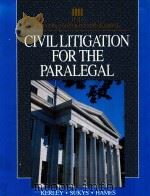
- CIVIL LITIGATION FOR THE PARALEGAL
- 1992 LAWYERS COOPERATIVE PUBLISHING DELMAR PUBLISHERS INC.
-
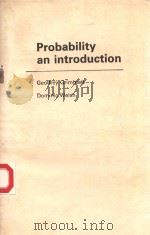
- PROBABILITY AN INTRODUCTION
- 1986 CLARENDON PRESS
-
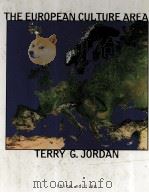
- THE EUROPEAN CULTURE AREA:A SYSTEMATIC GEOGRAPHY THIRD EDITION
- 1996 HARPER COLLINS COLLEGE PUBLISHERS
-

- CHEMISTRY AN INTRODUCTION
- 1988 WEST PUBLISHING COMPANY
-
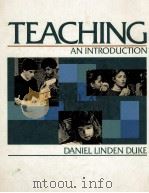
- TEACHING AN INTRODUCTION
- 1990 MCGRAW-HILL PUBLISHING COMPANY
-
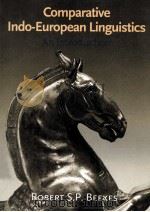
- COMPARATIVE INDO-EUROPEAN LINGUISTICS AN INTRODUCTION
- 1995 JOHN BENJAMINS PUBLISHING COMPANY
-
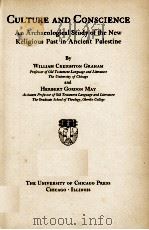
- CULTURE AN CONSCIENCE
- 1936 THE UNIVERSITY OF CHICAGO PRESS
-
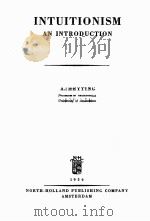
- INTUITIONISM AN INTRODUCTION
- 1956 NORTH-HOLLAND PUBLISHING COMPANY
-

- AN INTRODUCTION TO ANIMAL TISSUE CULTURE
- 1977 EDWARD ARNOLD
提示:百度云已更名为百度网盘(百度盘),天翼云盘、微盘下载地址……暂未提供。➥ PDF文字可复制化或转WORD